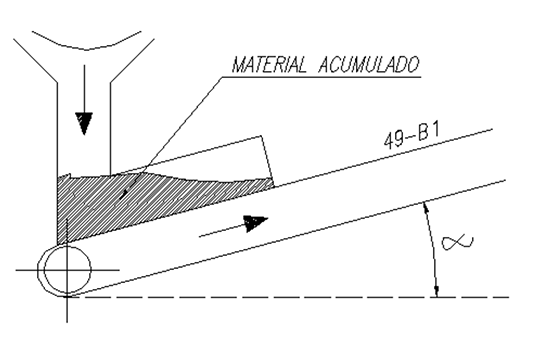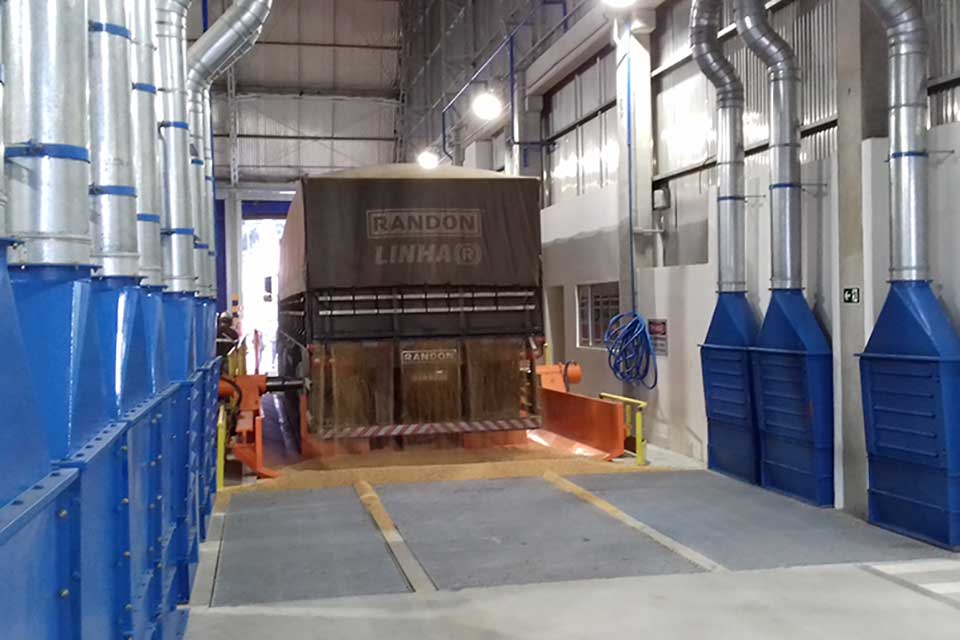How to optimize suction systems in discharge chutes between conveyors
Conveyor belts are commonly used in port plants and industrial facilities to transport coarse and fine solids between different areas of the facility. However, depending on the size of the plant, it is not always possible to use only one belt. If the path changes direction, several conveyor belts are required along the path.
When this occurs, one belt necessarily ends up unloading on the next and, during this process, dust is released due to the deviation of the path and a sudden drop in speed.
We must also consider that there will always be an air current in the direction of the belt, with few conveyors discharging in parallel, as this model is generally used to divert material at angles greater than 90 degrees.
Added to this is the fact that the material is harvested in different areas, with different types of processes and materials that can present less or greater powder separation.
Therefore, the recommendation becomes clear in the sense of installing a good suction system at the transfer points between the different belts.
The benefits of this measure are several:
- Ensures a ventilated environment, removing heat, moisture and contaminants from the air.
- Protects the health of operators by preventing micrometric particles from reaching the lungs.
- Increases the efficiency of equipment that works free from dust accumulation and at a lower temperature.
- Assists in safety against explosions and fires.
However, the optimization of an suction system, with the consequent reduction in its size, complexity and acquisition cost, can greatly benefit from other actions related to the design of the entire conveyor system.
In this scenario, an essential component is the chute, basically a small transfer receptacle that prevents overfeeding on the next conveyor belt.
Regarding the chute, one of the main problems is the wrong configuration. Most of the time, the deficiency originates in the civil design stage, as the equipment is designed with little space for falls that end up occurring at right angles.
In addition to the right angle, in many cases the receiving belt has a rising angle that results in an accumulation of product that spills over the sides of the belt, as shown in the figure below.

However, the most critical factor is when there is a large amount of time between unloading and receiving the product. In this case, the belt that receives the bulk suffers a strong impact, causing a large quantity of dust that is not eliminated by the conventional suction system. When this occurs, there is also loss of product that is thrown off the belt.
Note that, when calculating the suction flow of a transfer, the width and speed of the belt are taken into account, as well as the type of material transported. Even calculating flow rates many times higher than what the standard recommends, the suction may not be efficient if there is a significant impact of the product with the inlet belt.
Many improvements can be made to solve these problems. Closing the sides of the belt, relocating the sensor in a more strategic position or even placing internal fringes along the inlet belt are some of the alternatives.
Note, however, that these are palliative solutions. The ideal is to reduce the product's descent speed by placing internal baffles in the free fall duct. With this, it is possible to reduce the material descent speed and, consequently, reduce the impact of the product on the receiving belt's inlet.
Finally, there is the issue of the scrapers installed on the chutes. A poorly selected or poorly-adjusted scraper allows for the accumulation of dust which, over time, breaks off along the belt path and is deposited in other areas.
In these cases, TMSA installs more efficient scrapers, equipped with a push pull system and lower chutes.



